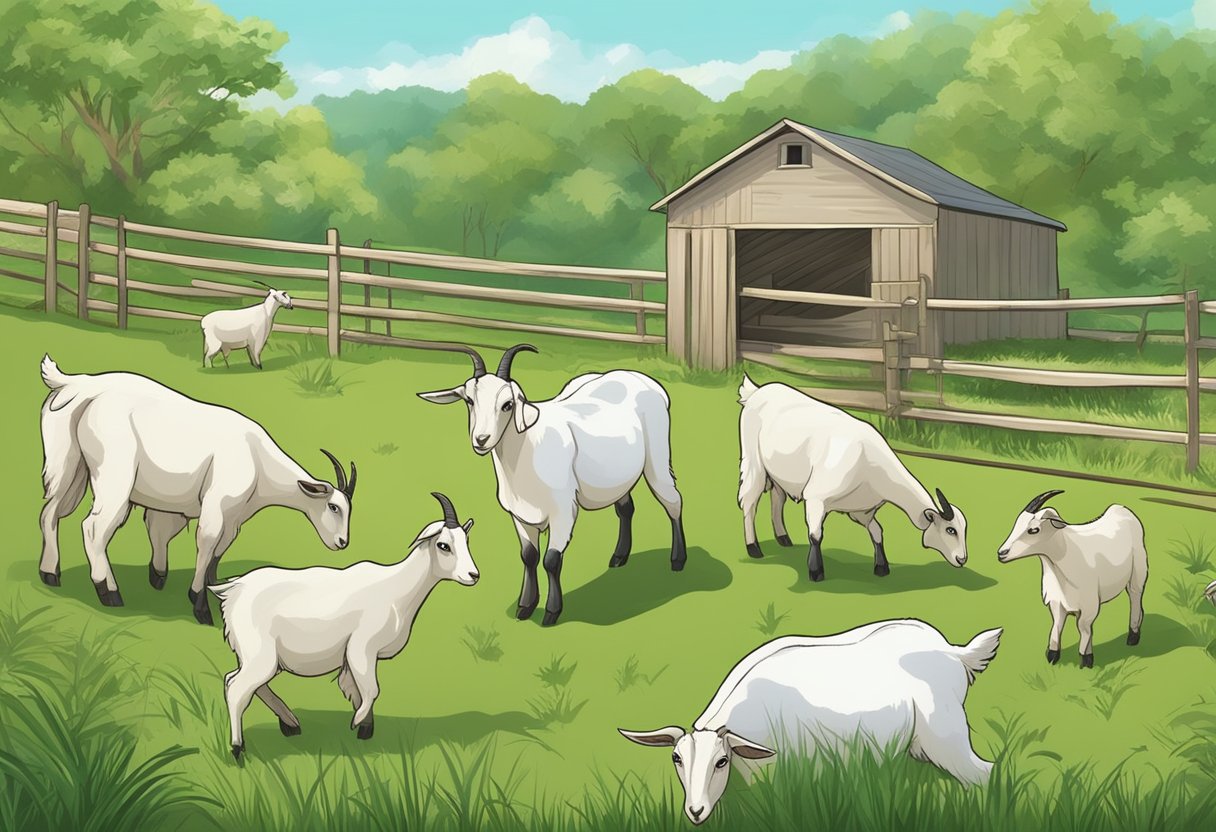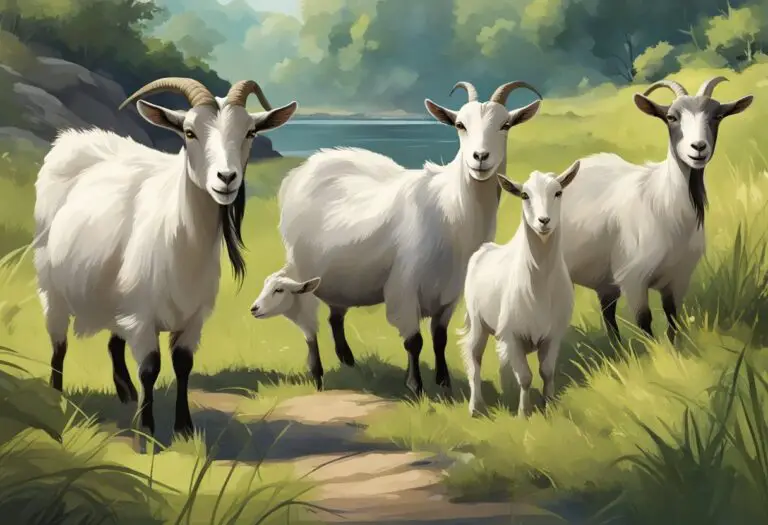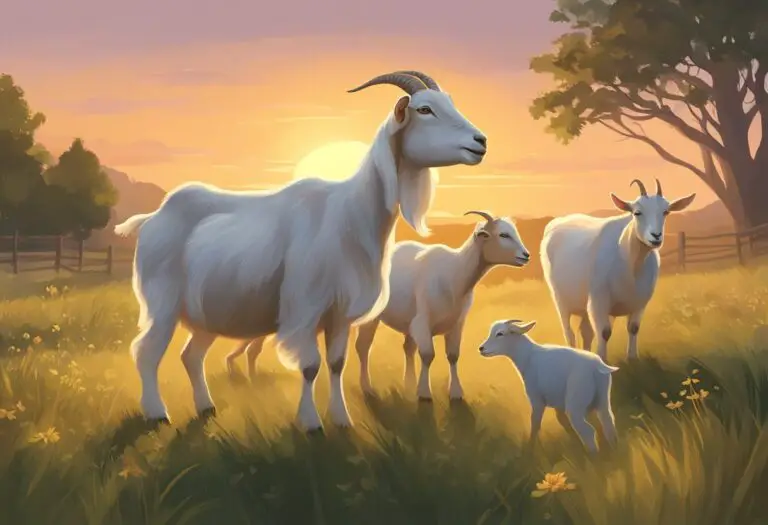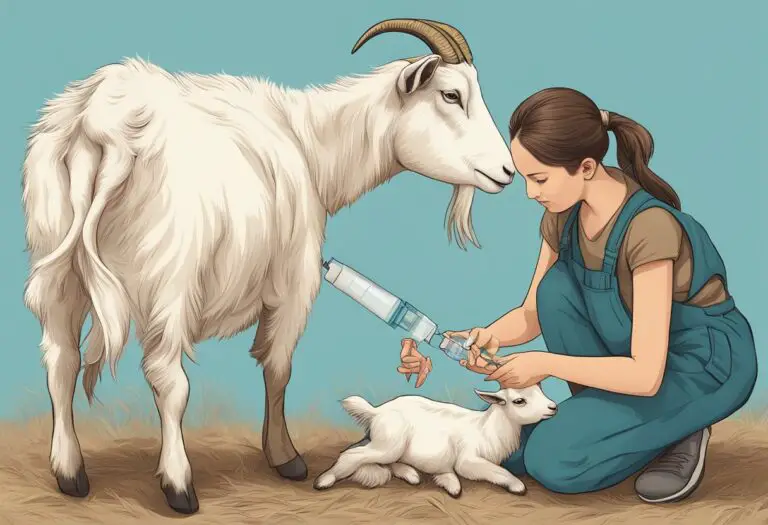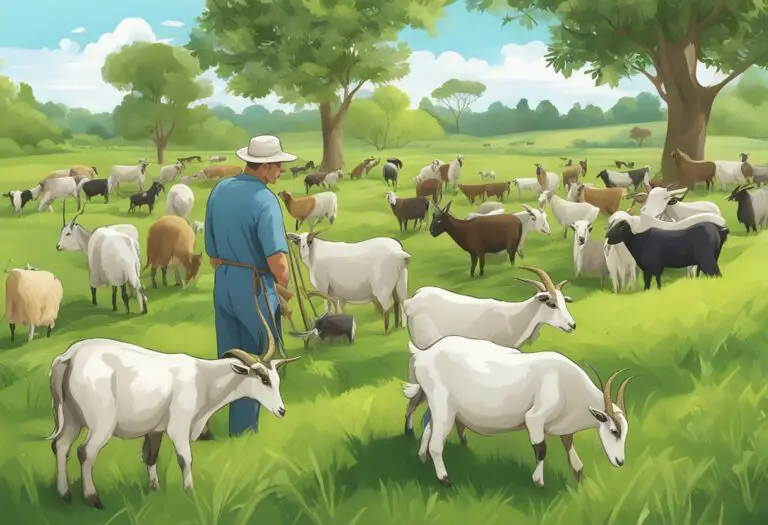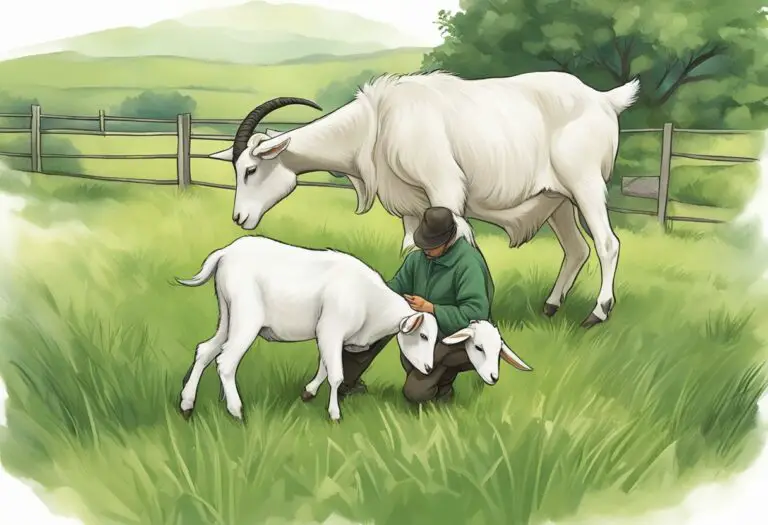Why Goat Breeding is Important for Livestock Production
Goat breeding is an important practice that has been around for centuries. It involves selecting and mating goats with desirable traits in order to improve the overall quality of the herd. While it may not be as well-known as other types of animal breeding, such as cattle or horses, it is still an integral part of agriculture and animal husbandry.
One of the main reasons why goat breeding is important is because it helps to improve the health and productivity of the herd. By selecting goats with desirable traits, such as disease resistance, high milk production, or fast growth rates, breeders can create a stronger and more resilient herd. This, in turn, can lead to increased profits for farmers and a more sustainable source of food for communities.
Another reason why goat breeding is important is because it allows for the preservation of certain goat breeds. With the rise of industrial agriculture and the focus on high-yielding breeds, many traditional breeds of goats have been pushed to the brink of extinction. By selectively breeding these breeds and promoting their unique qualities, breeders can help to ensure that they do not disappear entirely. This is important not only for the preservation of genetic diversity but also for the cultural significance of these breeds in certain communities.
Economic Benefits

Goat breeding has numerous economic benefits that make it an important agricultural activity. The following subsections highlight some of the ways that goat breeding contributes to the economy.
Livelihood Enhancement
Goat breeding can provide a source of income and livelihood for farmers and rural communities. Goats are relatively easy to care for and require less land and resources compared to other livestock. This makes them an ideal choice for small-scale farmers who may not have access to large tracts of land or extensive resources. By breeding goats, farmers can sell the offspring, meat, milk, and other products to generate income and support their families.
Dairy Production
Goat milk is highly nutritious and has numerous health benefits. It is rich in protein, vitamins, and minerals and is easier to digest than cow’s milk. Goat milk can be used to produce a variety of dairy products such as cheese, yogurt, and ice cream. These products have a high demand in the market and can provide a significant source of income for farmers.
Meat Production
Goat meat is a popular delicacy in many parts of the world. It is considered a healthier alternative to beef and other red meats as it is lower in fat and cholesterol. Goat meat is also easier to digest and has a unique taste that appeals to many consumers. By breeding goats for meat production, farmers can tap into this lucrative market and generate income.
Fiber and Hide Production
Goats are also a source of fiber and hide. Mohair and cashmere are two types of fiber that can be obtained from goats. These fibers are highly valued in the textile industry and can be used to produce a variety of clothing items such as sweaters, scarves, and blankets. Goat hide can also be used to produce leather products such as shoes, bags, and belts. By breeding goats for fiber and hide production, farmers can diversify their income streams and take advantage of the high demand for these products.
In conclusion, goat breeding has numerous economic benefits that make it an important agricultural activity. By breeding goats for dairy, meat, fiber, and hide production, farmers can generate income and support their families.
Agricultural Sustainability

Goat breeding plays a significant role in promoting agricultural sustainability. This is because goats are efficient in converting low-quality feed into high-quality protein, making them an excellent source of food for humans. Additionally, goats can thrive in harsh environments, such as arid and semi-arid regions, where other livestock cannot survive.
Land Management
Goats can also help in managing land resources sustainably. They are browsers, which means they eat weeds, shrubs, and other plants that are not preferred by other livestock. This helps to control the growth of invasive plant species and reduces the risk of wildfires. Furthermore, goats’ grazing habits promote the growth of native grasses, which helps to maintain the soil’s fertility and prevent soil erosion.
Organic Fertilizer Production
Goats also produce high-quality organic fertilizer, which is essential for sustainable agriculture. Their manure is rich in nitrogen, phosphorus, and potassium, which are important nutrients for plant growth. Farmers can use goat manure to fertilize their crops, which reduces their reliance on synthetic fertilizers. This, in turn, reduces the environmental impact of agriculture by reducing the amount of chemical runoff into waterways and soil pollution.
In conclusion, goat breeding is an important aspect of agricultural sustainability. Goats are efficient in converting low-quality feed into high-quality protein, can thrive in harsh environments, and help in managing land resources sustainably. Their manure is also an excellent source of organic fertilizer, which is essential for sustainable agriculture.
Genetic Improvement

Goat breeding plays a crucial role in genetic improvement. By selectively breeding goats with desirable traits, breeders can improve the overall quality and productivity of their herds. This process involves identifying the best-performing goats and using them to produce the next generation.
Breed Conservation
Selective breeding is also important for breed conservation. Many goat breeds are endangered, and breeding programs can help to preserve them. By breeding goats from these rare breeds, breeders can help to ensure that they do not become extinct. This is particularly important because some of these breeds have unique characteristics that are highly valued, such as their ability to produce high-quality milk or their adaptability to harsh environments.
Selective Breeding
Selective breeding involves choosing goats with desirable traits and breeding them together to produce offspring with those traits. This process can be used to improve a wide range of characteristics, such as milk production, meat quality, and disease resistance. Breeders can use a variety of techniques to select the best goats for breeding, including performance testing, pedigree analysis, and visual inspection.
One of the key benefits of selective breeding is that it can improve the overall health and welfare of the herd. By breeding for disease resistance and other desirable traits, breeders can reduce the incidence of health problems and improve the overall well-being of their goats.
In conclusion, genetic improvement through selective breeding is a critical aspect of goat breeding. It allows breeders to improve the quality and productivity of their herds, preserve rare breeds, and enhance the health and welfare of their goats.
Cultural and Social Impact

Traditional Practices
Goat breeding has been an important part of traditional practices in many cultures around the world. In some communities, goats are considered a symbol of wealth and prosperity. For example, in many African countries, goats are often given as gifts during weddings and other important ceremonies. In addition, goat milk and meat are often used in traditional dishes and are an important source of nutrition for many people.
Community Development
Goat breeding can also have a significant impact on community development. In many rural areas, goat farming can provide a sustainable source of income for families. This is particularly important in areas where other forms of agriculture may not be viable due to poor soil quality or other environmental factors. In addition, goat breeding can help to create jobs and stimulate economic growth in rural communities.
Furthermore, goat breeding can also empower women in many communities. In some cultures, women are responsible for caring for the goats and managing the business aspects of goat farming. This can provide women with a source of income and give them greater independence and decision-making power within their families and communities.
Overall, goat breeding plays an important role in both cultural and social contexts. It provides a source of nutrition, income, and community development, while also preserving traditional practices and empowering women.
Research and Education

Goat breeding is an essential area of research and education for veterinary medicine and agricultural innovation. The following subsections highlight how goat breeding research and education are crucial for the advancement of these fields.
Veterinary Medicine
Goat breeding research has contributed significantly to the field of veterinary medicine. It has led to the development of new drugs, vaccines, and diagnostic tools to prevent and treat various goat diseases. Goat breeding research has also helped in improving the health and welfare of goats, which is essential for animal health and food safety.
Through education, veterinarians are trained to identify and diagnose goat diseases and provide appropriate treatment. They also learn about the best breeding practices to improve the health and productivity of goats. With this knowledge, they can advise goat farmers on how to prevent and treat diseases and improve their herd’s overall health.
Agricultural Innovation
Goat breeding research has led to significant agricultural innovation. It has helped in developing new goat breeds that are more productive, disease-resistant, and adaptable to different environments. These new breeds have increased the quality and quantity of goat products, such as milk, meat, and fiber.
Education in goat breeding has also played a crucial role in agricultural innovation. It has trained farmers on the best breeding practices, such as selecting the right breeding stock, managing breeding cycles, and maintaining herd health. With this knowledge, farmers can improve their herd’s productivity and profitability.
In conclusion, research and education in goat breeding are essential for veterinary medicine and agricultural innovation. They have contributed significantly to the development of new drugs, vaccines, and diagnostic tools for goat diseases. They have also led to the development of new goat breeds that are more productive and disease-resistant. Education in goat breeding has trained farmers and veterinarians on the best breeding practices, which has improved the health and productivity of goats.
Environmental Contributions

Goat breeding has a significant impact on the environment. Goats can survive in harsh environments where other livestock cannot, making them an excellent choice for sustainable farming. They can feed on low-quality forage and browse on shrubs and trees, which helps to control weeds and prevent soil erosion.
Moreover, goats are known for their ability to convert low-quality feed into high-quality milk and meat. This means that they require less land and resources to produce the same amount of food compared to other livestock. As a result, goat breeding can help to reduce the environmental footprint of livestock production.
Additionally, goat manure is an excellent fertilizer that can improve soil quality and increase crop yields. Goat manure is rich in nitrogen, phosphorus, and potassium, which are essential nutrients for plant growth. This makes goat breeding an attractive option for farmers who want to improve soil fertility and reduce their reliance on chemical fertilizers.
In conclusion, goat breeding has numerous environmental contributions that make it an attractive option for sustainable farming. Goats can survive in harsh environments, require less land and resources, and produce high-quality milk and meat. Furthermore, their manure is an excellent fertilizer that can improve soil quality and increase crop yields.
Challenges in Goat Breeding

Goat breeding presents several challenges that breeders must overcome to ensure a profitable and sustainable operation. Two of the most significant challenges are disease management and climate adaptability.
Disease Management
Disease management is crucial in goat breeding, as goats are susceptible to various diseases that can cause significant economic losses. Breeders must implement measures to prevent the spread of diseases, such as proper sanitation, vaccination, and quarantine procedures. Additionally, breeders must monitor their goats for signs of illness and promptly treat any sick animals to prevent the spread of disease.
Climate Adaptability
Goats are adaptable animals that can thrive in a variety of climates. However, extreme weather conditions can pose a challenge to goat breeders. For example, in hot and humid environments, goats can suffer from heat stress, which can lead to decreased milk production and reproductive problems. In contrast, in cold environments, goats may require additional feed to maintain their body temperature, which can increase production costs. Therefore, breeders must carefully select goat breeds that are well-suited for their local climate and implement measures to protect their goats from extreme weather conditions.
Overall, disease management and climate adaptability are significant challenges that goat breeders must overcome to ensure a profitable and sustainable operation. By implementing proper disease prevention measures and carefully selecting goat breeds that are well-suited for their local climate, breeders can mitigate these challenges and ensure the long-term success of their operation.

